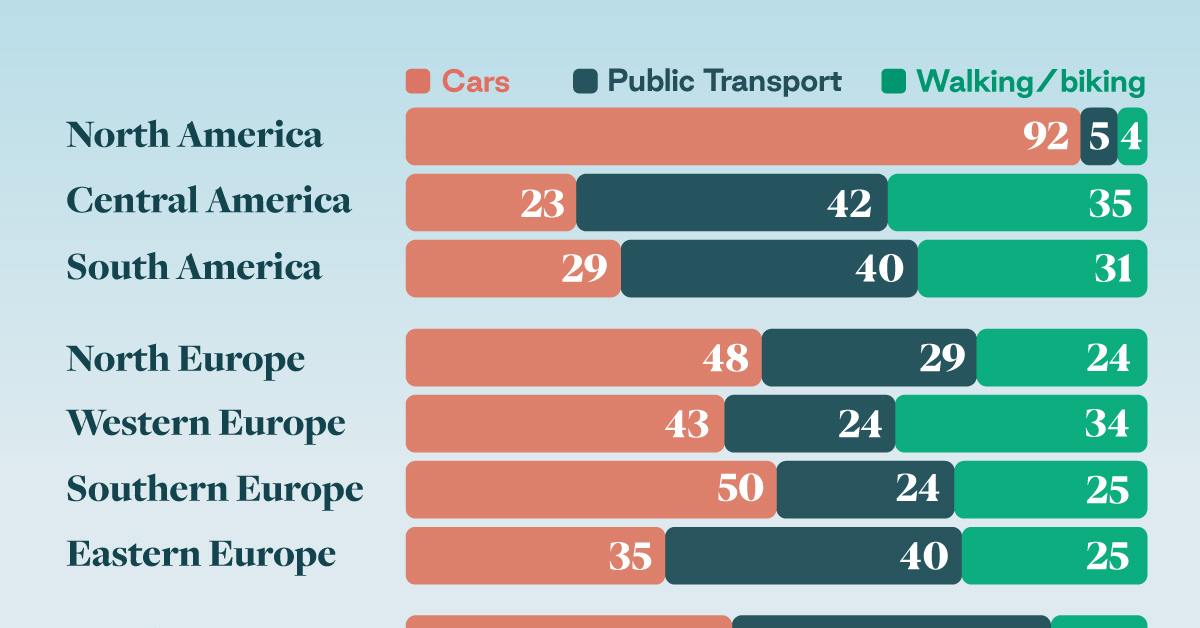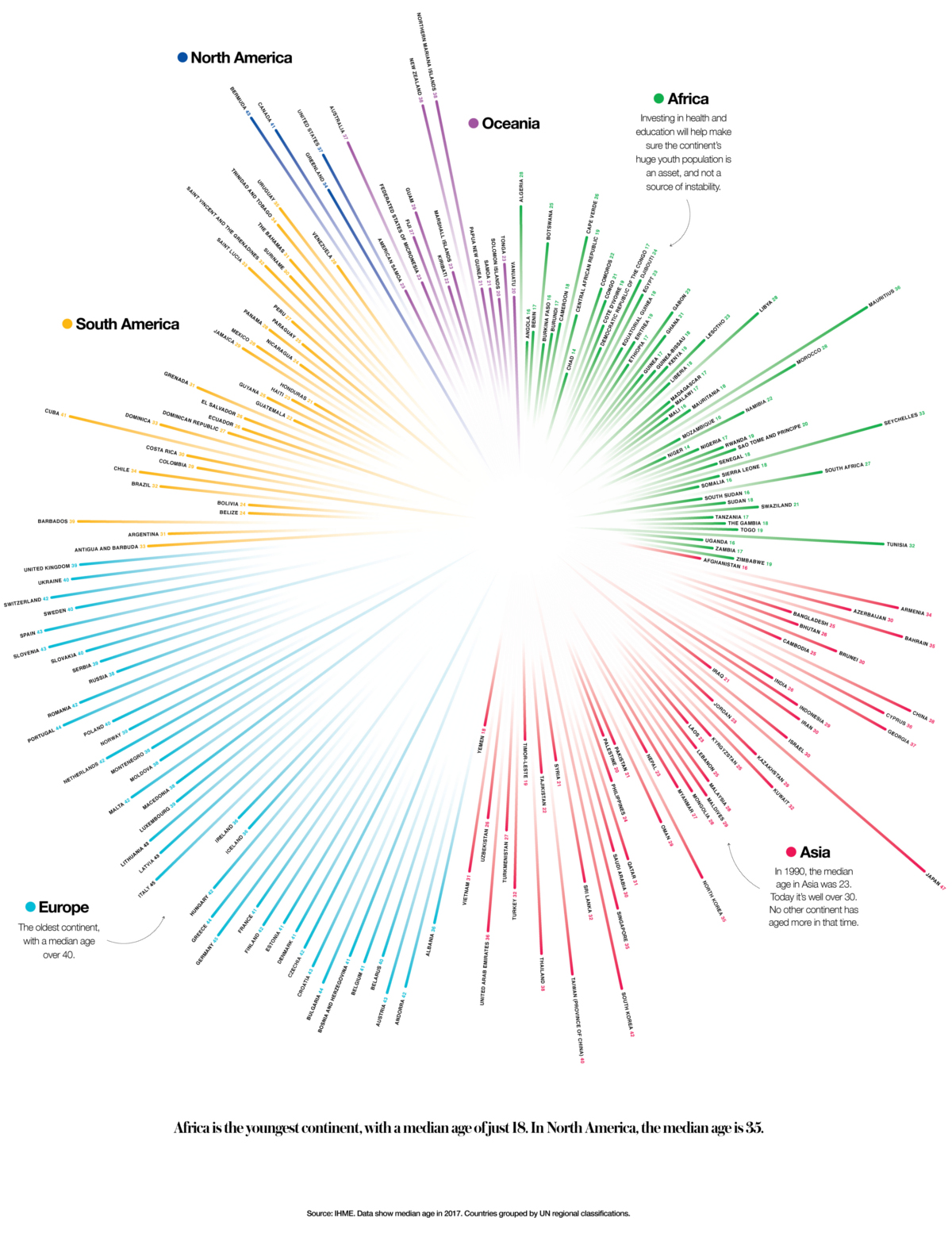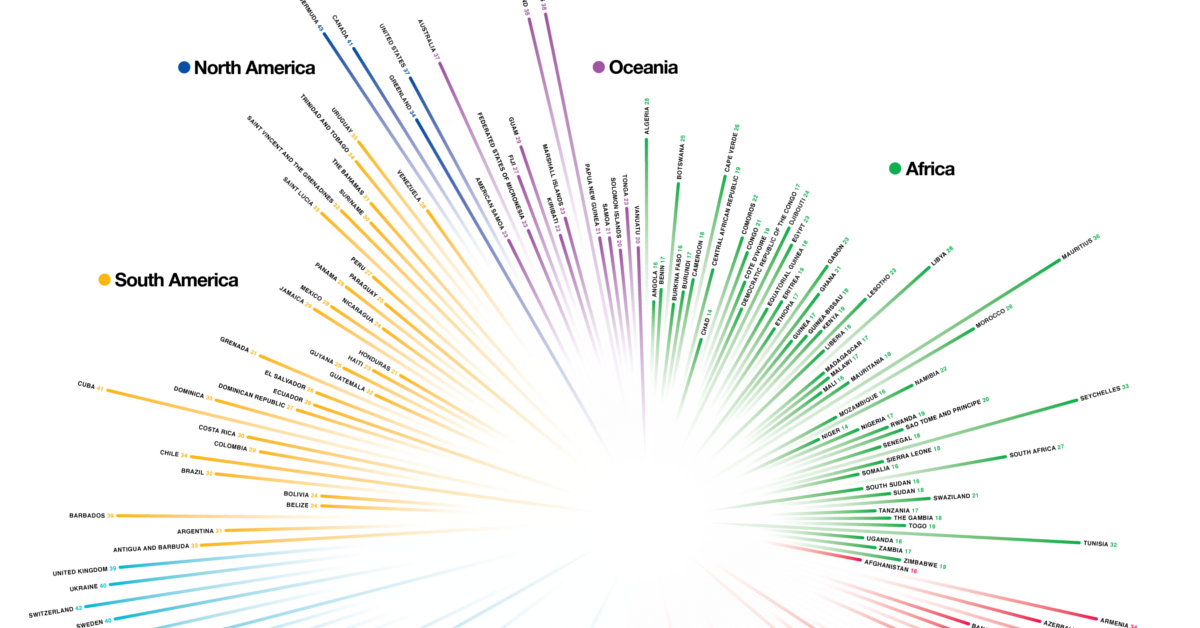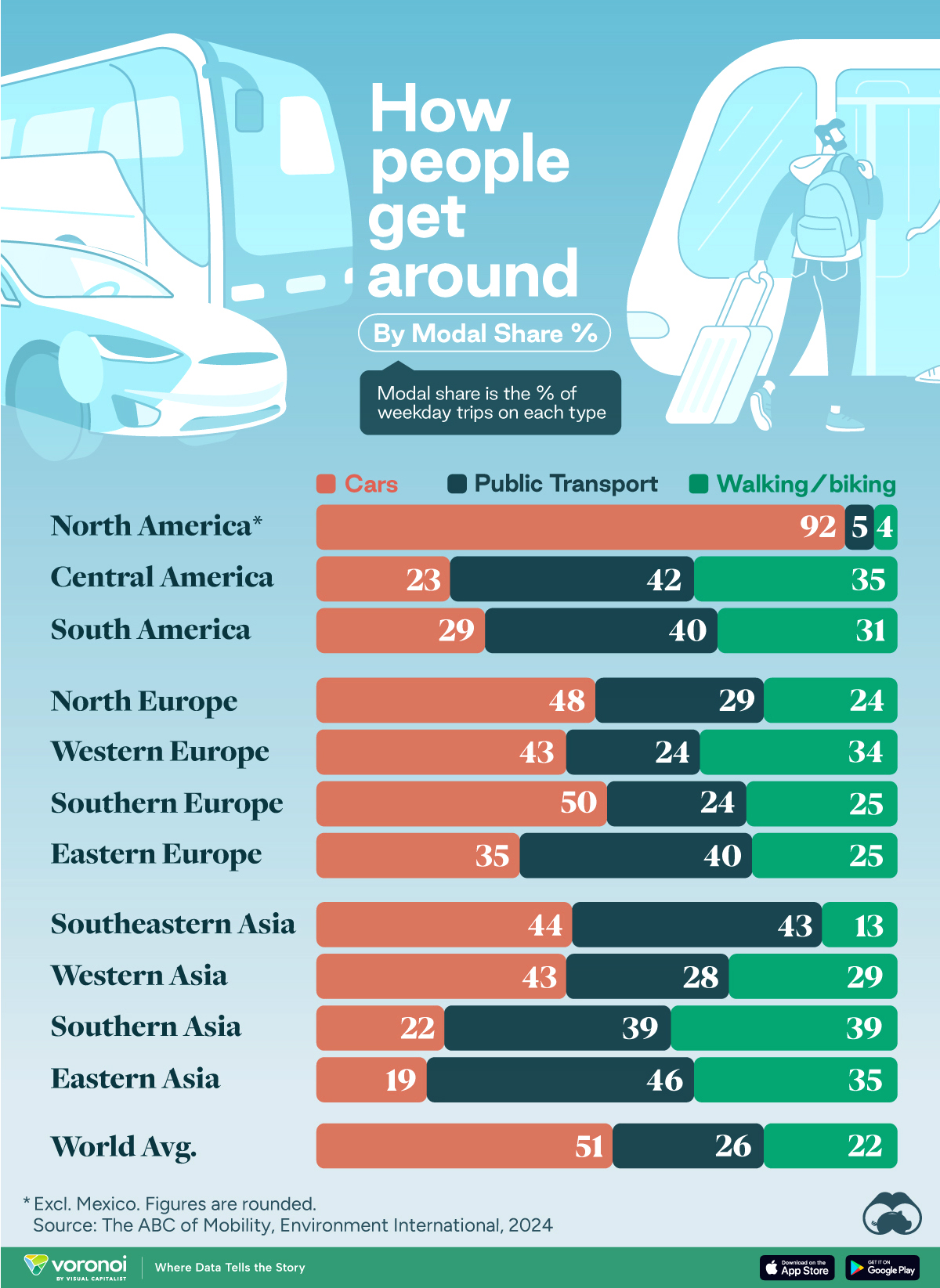Misc
Median Age of the Population in Every Country
View the full-size version of the infographic
The Median Age of the Population in Every Country
View the full-size version of the infographic by clicking here
With a few notable exceptions, the world is rapidly aging.
Today’s infographic, which was shared by Bill Gates on Reddit, shows this incredible explosion in age and how different countries contrast with one another on this demographic metric.
While aging populations in Europe, North America, and Asia stand out on this type of visualization, it’s also important to look at the negative space. In both South America and Africa, populations are still quite young, with Africa getting younger and younger.
Note: The infographic is grouped based on U.N. regional classifications, and lumps Central America, the Caribbean, and South America as one demographic region.
The Oldest Countries
Which countries are the outliers in terms of global demographics?
Let’s start by taking a look at the oldest countries in terms of median age.
| Rank | Country | Median Age | Region |
|---|---|---|---|
| #1 | Japan | 47 years | Asia |
| #2 (t) | Germany | 45 years | Europe |
| #2 (t) | Italy | 45 years | Europe |
| #4 (t) | Greece | 44 years | Europe |
| #4 (t) | Bulgaria | 44 years | Europe |
| #4 (t) | Portugal | 44 years | Europe |
Japan takes the cake for the oldest population and it’s joined by a host of European nations.
The following countries tied for the #7 spot, which is just off of the above list: Austria, Croatia, Latvia, Lithuania, Slovenia, Spain, and Bermuda. All of these places had median ages of 43 years, with Bermuda being the only non-European state of this group.
It’s worth noting that some smaller countries appear to be excluded from Gates’ infographic. As we showed on our last chart covering the subject of median age, which uses a different data set, the small city-state of Monaco (which has a population of just 39,000 people) actually has the highest median age in the world at 53.1 years.
The Youngest Countries
Now, let’s take a peek at the world’s youngest countries in terms of median age.
| Rank | Country | Median Age | Region |
|---|---|---|---|
| #1 (t) | Chad | 14 years | Africa |
| #1 (t) | Niger | 14 years | Africa |
| #3 (t) | Afghanistan | 16 years | Middle East |
| #3 (t) | Angola | 16 years | Africa |
| #3 (t) | Burkina Faso | 16 years | Africa |
| #3 (t) | Mali | 16 years | Africa |
| #3 (t) | Somalia | 16 years | Africa |
| #3 (t) | South Sudan | 16 years | Africa |
| #3 (t) | Uganda | 16 years | Africa |
The youngest countries globally are Chad and Niger with a median population age of 14 years. Both are located in Sub-Saharan Africa.
The only non-African country is war-torn Afghanistan, where the median age is 16 years.
A variety of countries tied with a median age of 17 years old, which puts them just off of the above list. Those countries include: Benin, Burundi, Ethiopia, Madagascar, Malawi, Nigeria, Tanzania, Zambia, Yemen, and Timor-Leste.
More Context on Aging
Want to get an even better idea of what the world looks like as it ages?
To get a sense of change over the coming decades, it’s worth taking a look at this animation that shows median age projections with a focus on Western countries all the way until the year 2060.
Automotive
How People Get Around in America, Europe, and Asia
Examining how people get around using cars, public transit, and walking or biking, and the regional differences in usage.

How People Get Around in America, Europe, and Asia
This was originally posted on our Voronoi app. Download the app for free on iOS or Android and discover incredible data-driven charts from a variety of trusted sources.
This chart highlights the popularity of different transportation types in the Americas, Europe, and Asia, calculated by modal share.
Data for this article and visualization is sourced from ‘The ABC of Mobility’, a research paper by Rafael Prieto-Curiel (Complexity Science Hub) and Juan P. Ospina (EAFIT University), accessed through ScienceDirect.
The authors gathered their modal share data through travel surveys, which focused on the primary mode of transportation a person employs for each weekday trip. Information from 800 cities across 61 countries was collected for this study.
North American Car Culture Contrasts with the Rest of the World
In the U.S. and Canada, people heavily rely on cars to get around, no matter the size of the city. There are a few exceptions of course, such as New York, Toronto, and smaller college towns across the United States.
| Region | 🚗 Cars | 🚌 Public Transport | 🚶 Walking/Biking |
|---|---|---|---|
| North America* | 92% | 5% | 4% |
| Central America | 23% | 42% | 35% |
| South America | 29% | 40% | 31% |
| Northern Europe | 48% | 29% | 24% |
| Western Europe | 43% | 24% | 34% |
| Southern Europe | 50% | 24% | 25% |
| Eastern Europe | 35% | 40% | 25% |
| Southeastern Asia | 44% | 43% | 13% |
| Western Asia | 43% | 28% | 29% |
| Southern Asia | 22% | 39% | 39% |
| Eastern Asia | 19% | 46% | 35% |
| World | 51% | 26% | 22% |
Note: *Excluding Mexico. Percentages are rounded.
As a result, North America’s share of public transport and active mobility (walking and biking) is the lowest amongst all surveyed regions by a significant amount.
On the other hand, public transport reigns supreme in South and Central America as well as Southern and Eastern Asia. It ties with cars in Southeastern Asia, and is eclipsed by cars in Western Asia.
As outlined in the paper, Europe sees more city-level differences in transport popularity.
For example, Utrecht, Netherlands prefers walking and biking. People in Paris and London like using their extensive transit systems. And in Manchester and Rome, roughly two out of three journeys are by car.
-

 Markets5 days ago
Markets5 days agoVisualizing Global Inflation Forecasts (2024-2026)
-

 Green2 weeks ago
Green2 weeks agoThe Carbon Footprint of Major Travel Methods
-

 United States2 weeks ago
United States2 weeks agoVisualizing the Most Common Pets in the U.S.
-

 Culture2 weeks ago
Culture2 weeks agoThe World’s Top Media Franchises by All-Time Revenue
-

 voronoi1 week ago
voronoi1 week agoBest Visualizations of April on the Voronoi App
-

 Wealth1 week ago
Wealth1 week agoCharted: Which Country Has the Most Billionaires in 2024?
-

 Business1 week ago
Business1 week agoThe Top Private Equity Firms by Country
-

 Markets1 week ago
Markets1 week agoThe Best U.S. Companies to Work for According to LinkedIn
















